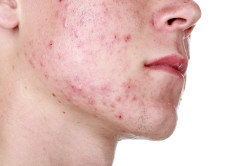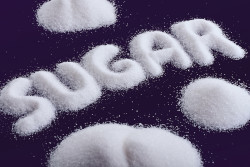The Acne Files: Cause and Effects of Acne part 1
June 28, 2012 10:06 pm
Acne: The word itself conjures up fear and dread in many people. Here at 360 Skin we thought we’d take a look at acne and give you the basic facts of what it is, how it is caused, and how best to combat it — be it adolescent or adult acne.
What is Acne?
Acne is a disease that involves the oil glands of the skin and normally manifests itself as pimples, whiteheads, and blackheads. Your skin has tiny pores which connect to the oil glands located under your skin via small canals called follicles. The oil produced by these glands normally carries your dead skin cells through the follicles to the surface of the skin for removal. But when these follicles get blocked by dirt, debris, and the overproduction of oil, cysts (pimples) are formed which are a perfect environment for bacteria to thrive. Simply put, acne occurs when the pores of the skin get blocked and oil backs up inside.

When this happens there are two basic products: acne that is not inflamed and acne that is inflamed. Non-inflammatory acne is basically whiteheads and blackheads – clogged oil ducts that are visible and unsightly, but not irritated.
However, when bacteria invades and attacks the environment inside a clogged pore this results in inflammation of the skin and the formation of a cyst that can be hot to the touch, reddened, and oftentimes painful.
What Causes Acne?
There are various factors which dermatologists have identified as the cause of acne, but the main two are hormones and diet. The hormonal aspects of puberty can cause a serious increase in the level of oil production. Puberty also sees a change or increase in hair follicle growth. The increased number of hair follicles and the excessive production of oil can easily result in pores being clogged.
Diet is also seen as a contributor to acne. Studies carried out by dermatologists have found a direct link between acne, sugar, and milk products. Inconclusive or conflicting results have been seen when looking at a whether chocolate and salt are contributors. We’ll go into more detail with diet in the next blog installment, but now let’s look at what acne can leave in its wake.
The Aftermath: Scarring
Acne scars are the most visible reminders of acne. They occur due to the fact that the skin does not heal completely after an outbreak and can vary in size and appearance depending on the severity of the infection. Most acne scarring is due to the pinching or squeezing of the cyst or when the cyst has been left untreated for a long time.
The body repairs damaged skin tissue through the production of white blood cells, but the repaired skin rarely returns to its original state and the result is that scars can form on the surface of the skin. Depending on the person and the intensity of the infection, it can take a few weeks for the inflammation to resolve, sometimes up to 12 months, while in other instances it may last the person’s lifetime.
There are two basic types of acne scars: pigmented scars (discoloration of the skin) and pitted scars (textured indentations in the skin). Pigmented scars are the result of a less severe infection. This type of scarring is usually associated when a normal acne infection occurs and then clears up, with the scars appearing as a discoloration to the skin. Many times this discoloration will fade, but sometimes it persists as a red or brown mark where the infection used to be.

Where the acne is very intense, it can cause deep damage to the tissue below the skin. The result is small to large rough pits on the surface of the skin causing visible changes in the person’s overall skin texture. This usually happens in cases when the infection is not detected early enough, when the person picks or squeezes at the cyst, and/or when treatment is delayed.

While there is no 100% solution for clearing acne scars, here at 360 Skin we have dedicated treatments that can reduce scarring by up to 60% — treatments specially designed to help break-up the scar tissue below the surface and help the skin rebuild itself from the inside out with collagen and elastin. Brandon Doyle, our licensed Medical Esthetician at 360 Skin, can help put together a treatment plan designed specifically for you and the problems you are experiencing and work with you to help reach a satisfactory goal.
In part two we will look at how diet affects acne and how best to combat and recover from acne.

